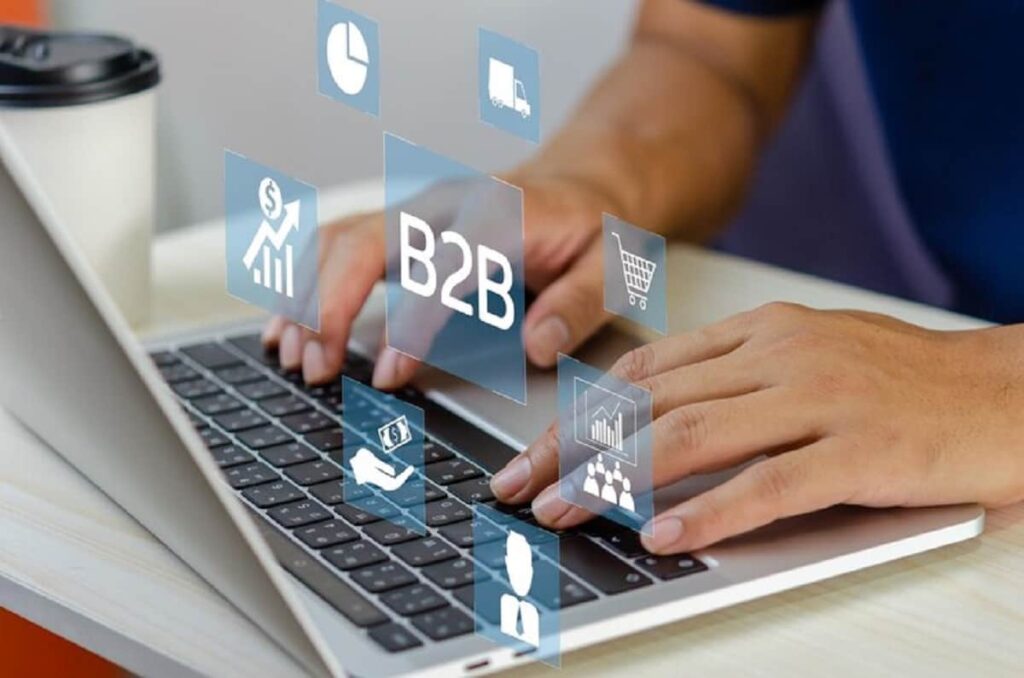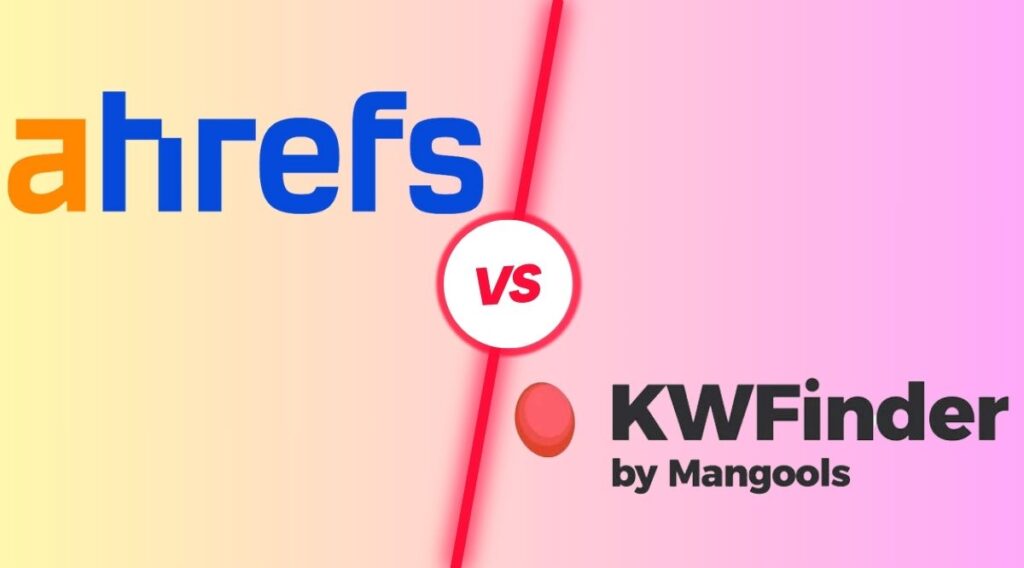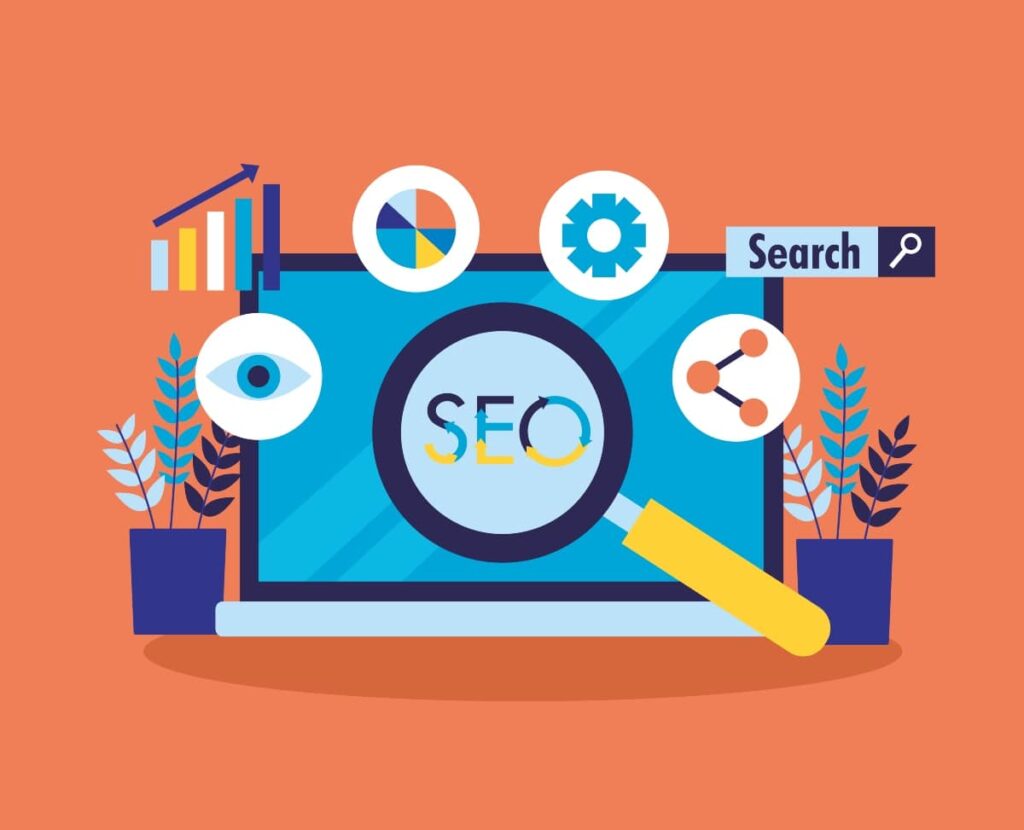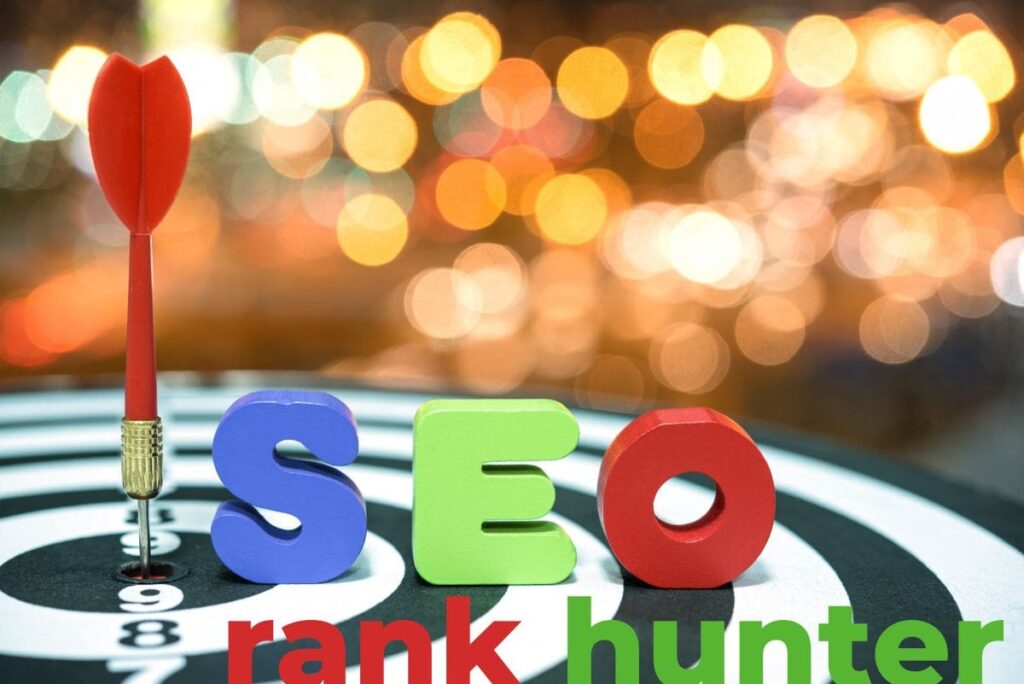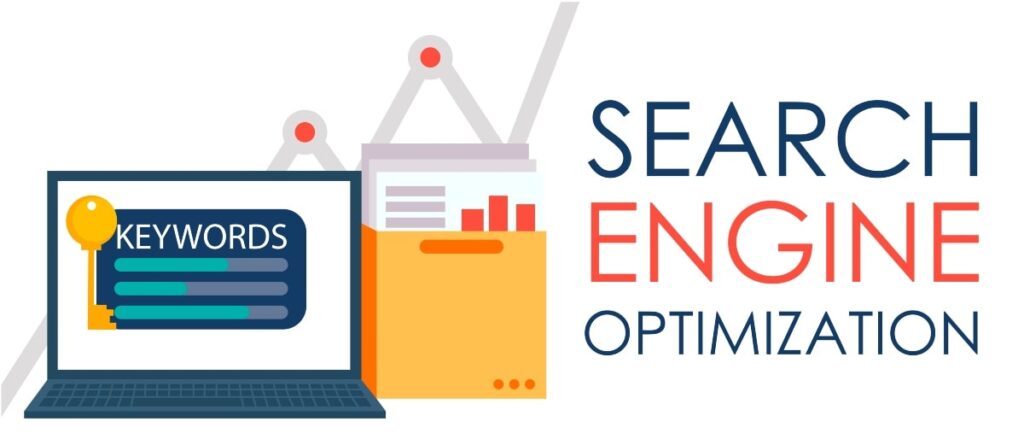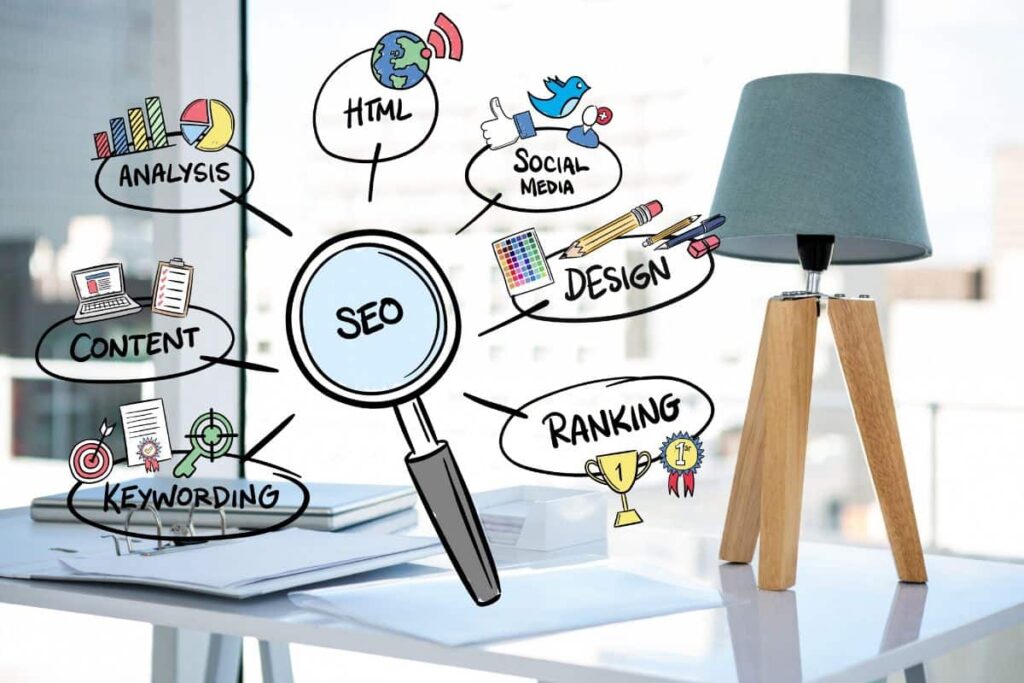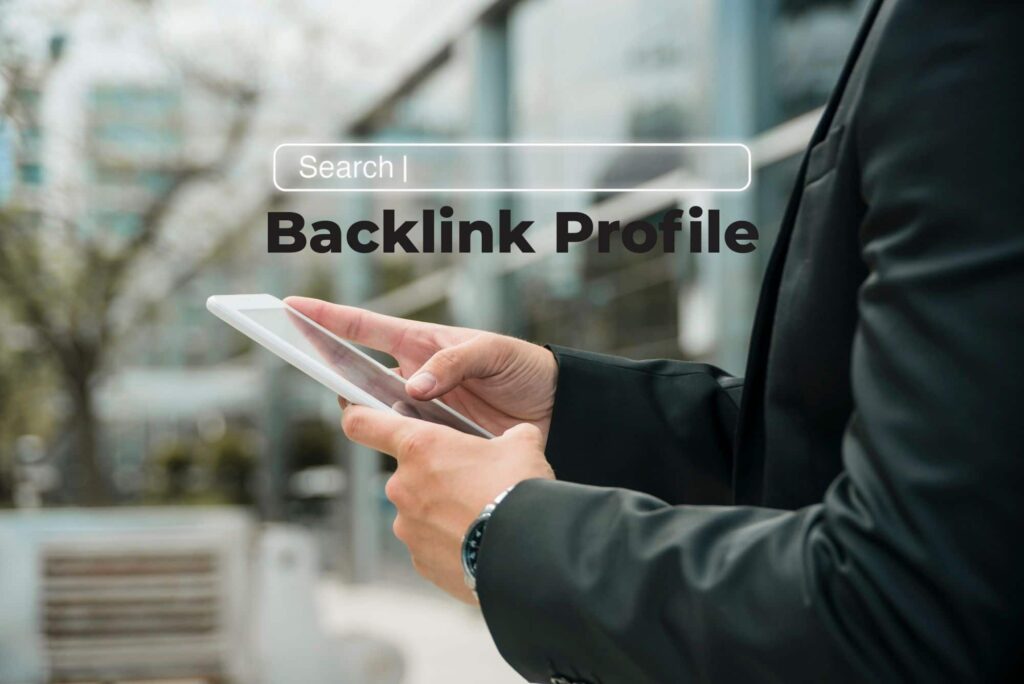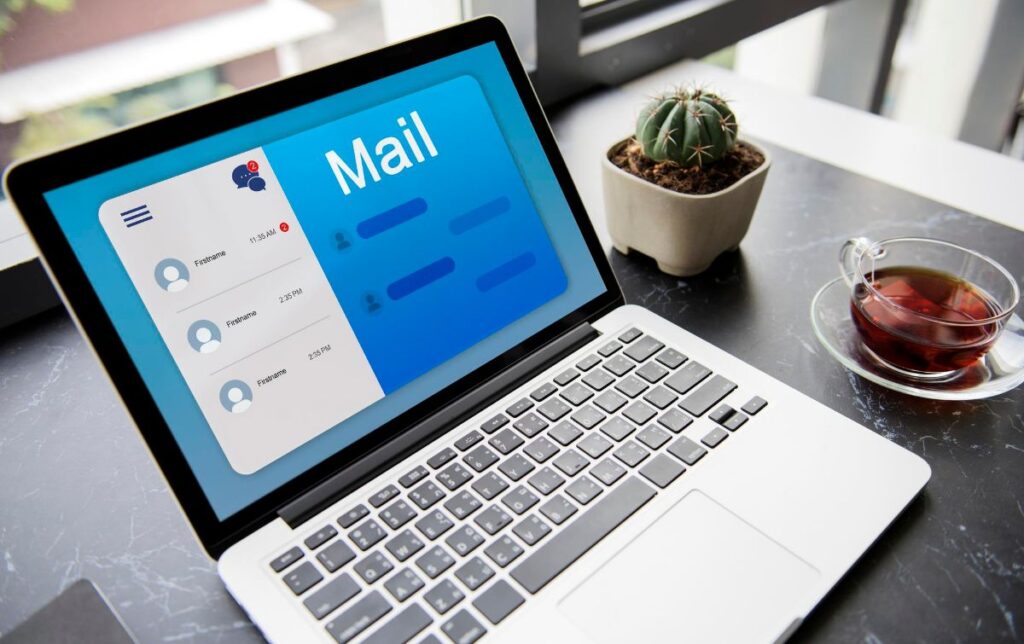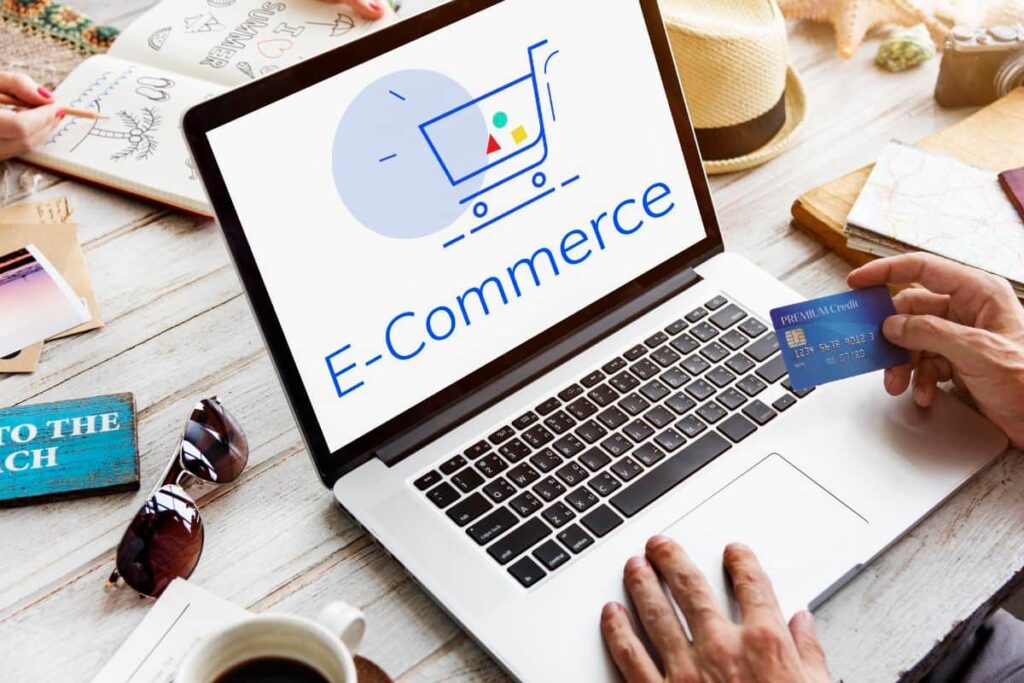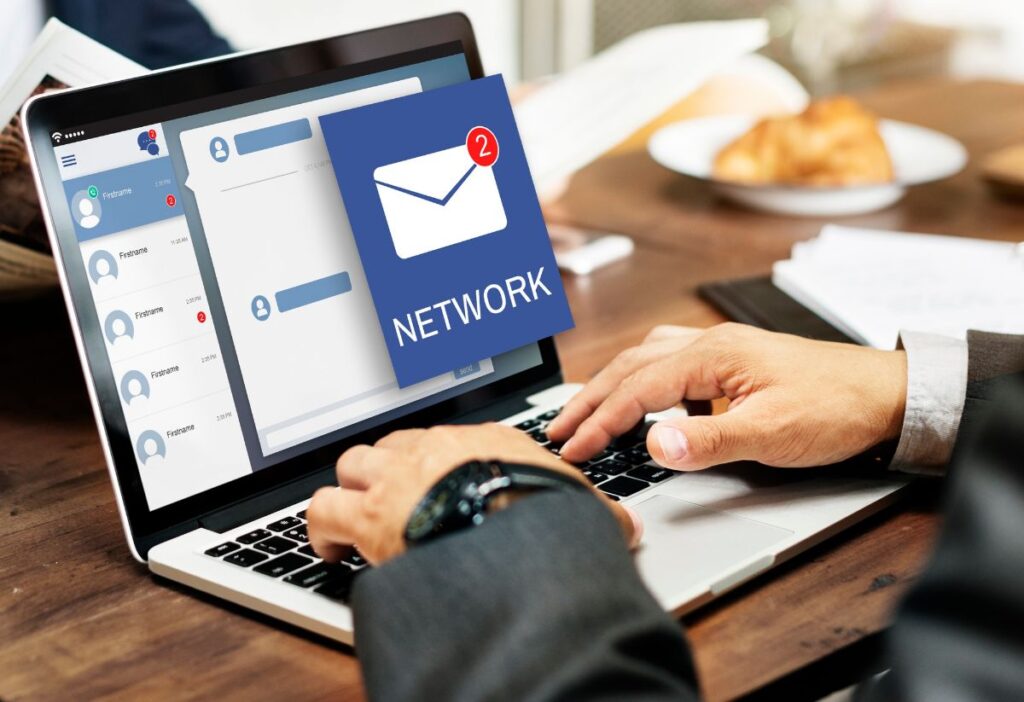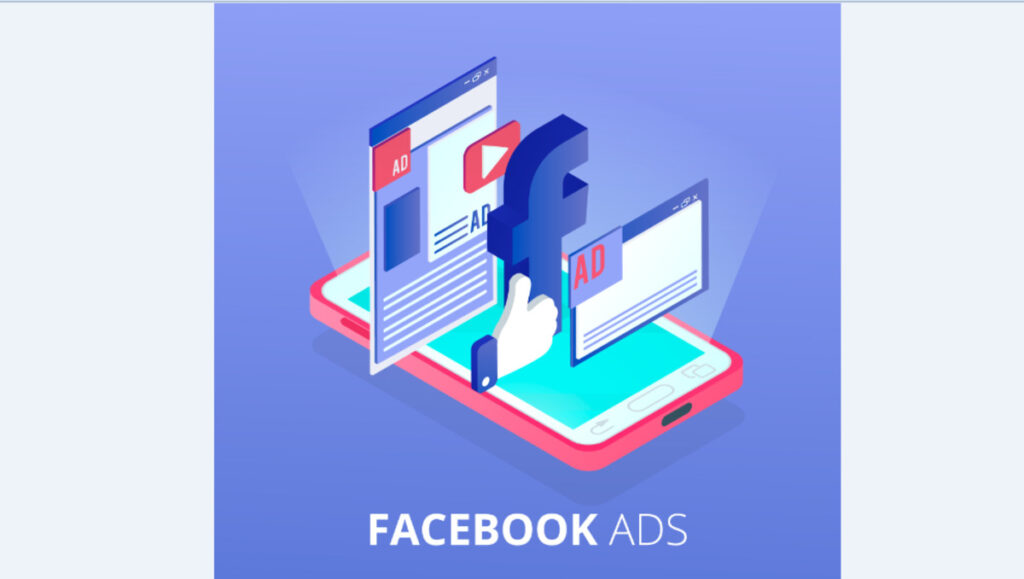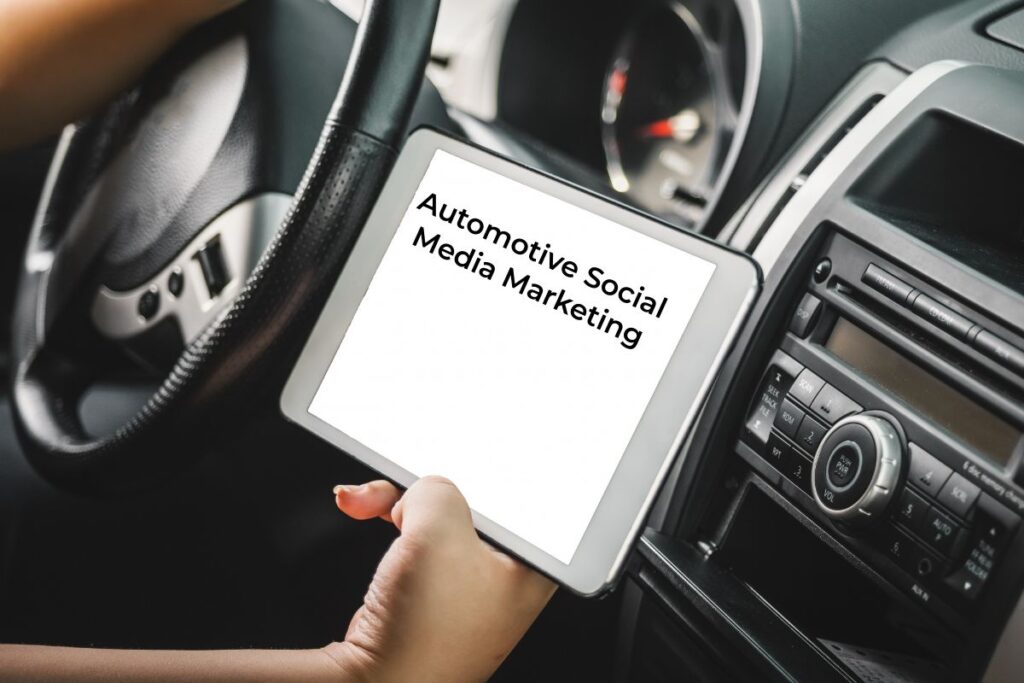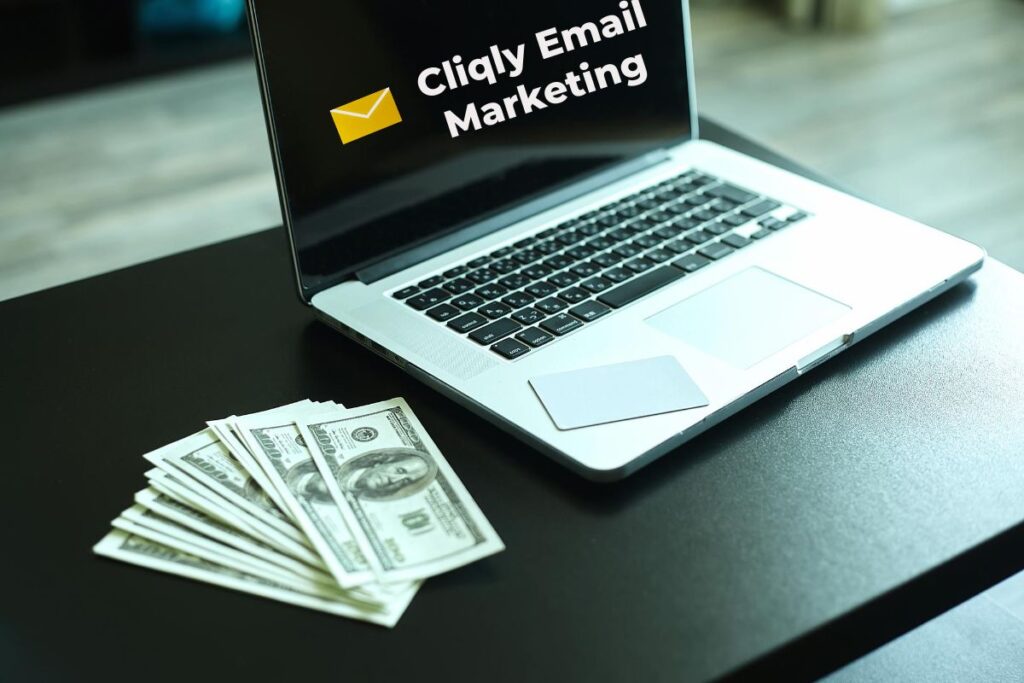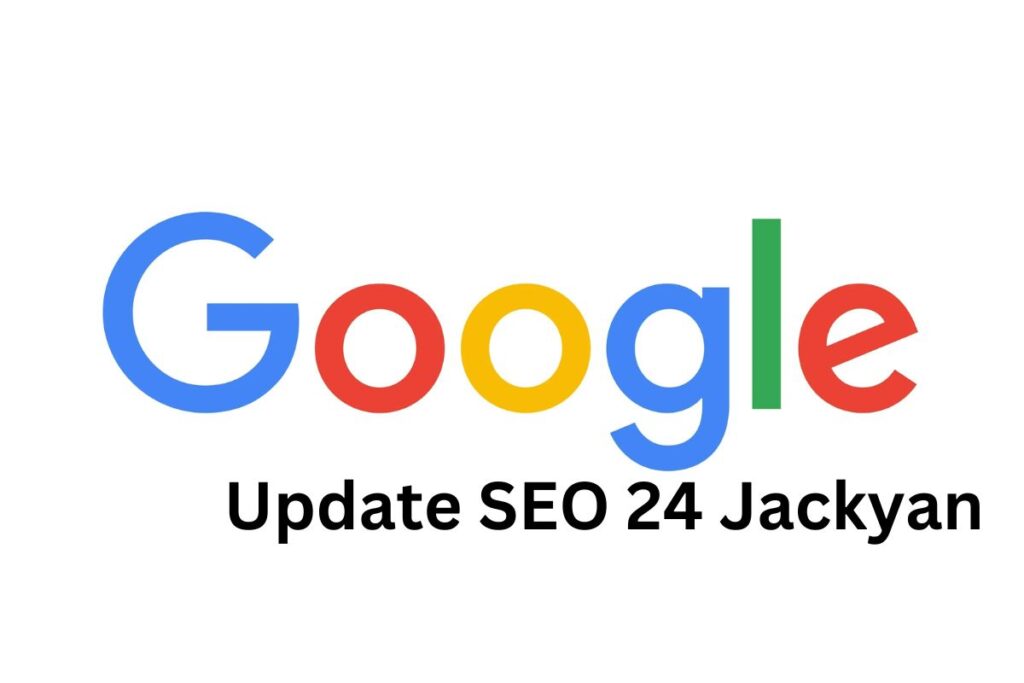In today’s digital landscape, where consumers are bombarded with myriad marketing messages daily, standing out and effectively reaching your target audience has become increasingly challenging. A potent remedy for companies looking to improve internet visibility and draw in quality leads is incorporating email marketing into a more comprehensive inbound marketing plan. It explores How can email marketing fuel your Overall Inbound Strategy, from lead creation to customer retention.
Definition of Email Marketing
Email marketing is a strategic marketing approach where commercial messages are sent to individuals via email. These messages typically contain promotional content, advertisements, or information about products and services. It’s a method of reaching out to potential or existing customers directly through their email inboxes to promote products, services, or offers.
Overview of Inbound Marketing Strategy
Inbound marketing aims to provide clients with timely and meaningful content at every stage of the buying process. Inbound marketing aims to produce and distribute content that speaks to the target audience’s needs instead of upsetting prospective consumers with intrusive advertisements. This content is tailored to attract, engage, and ultimately delight customers, guiding them through the entire process from awareness to purchase.
Significance of Email Marketing in Inbound Strategy
Email marketing is crucial in the inbound marketing strategy by enabling direct communication with prospects and customers. It serves as a tool for nurturing leads and guiding them through the sales funnel with personalized and targeted content. It helps to foster relationships and increase conversions. It tells us how email marketing can fuel your overall inbound strategy.
Understanding Inbound Marketing
Definition and Components
Inbound marketing is a marketing approach that involves putting the customer at the center of the strategy. It focuses on creating valuable and relevant content that attracts and engages potential customers. The critical components of inbound marketing include:
- Content Creation: This involves generating high-quality content that addresses the needs and interests of the target audience. It could be in the form of blog posts, articles, videos, podcasts, or any other format that resonates with the audience.
- SEO (Search Engine Optimization): Optimized content for search engines is called search engine optimization (SEO). Businesses can increase organic traffic and reach more potential customers by incorporating relevant keywords, optimizing meta tags, and building high-quality backlinks.
- Social Media Marketing: Social media platforms offer a means of establishing a connection and fostering audience engagement. Inbound marketing leverages social media channels to share valuable content, interact with followers, and build a community around the brand.
- Lead Nurturing: Lead nurturing comes into play once potential customers have engaged with the content. It involves building relationships with prospects through targeted communication and providing valuable information at each stage of the buyer’s journey, ultimately guiding them toward making a purchase decision.
Importance in Today’s Marketing Landscape
Inbound marketing has become increasingly important in today’s marketing landscape due to several factors:
- Building Brand Authority: Businesses can establish themselves as authorities in their industry by consistently creating valuable content that addresses the audience’s needs. It helps to build trust and credibility among potential customers.
- Driving Organic Traffic: Unlike paid advertising, which requires ongoing investment, inbound marketing focuses on generating organic traffic through valuable content and SEO techniques. This sustainable approach helps businesses reduce their reliance on paid channels and increase their visibility in search engine results.
- Fostering Long-Term Relationships: Inbound marketing is focused on building long-term relationships with customers rather than just making a one-time sale. Businesses can nurture customer loyalty and encourage repeat purchases by providing value at every stage of the buyer’s journey.
How Inbound Marketing Differs from Outbound
Inbound marketing differs from outbound marketing in many fundamental ways:
- Customer-Centric Approach: Inbound marketing puts the customer’s needs and interests first, focusing on providing value rather than pushing sales messages. In contrast, outbound marketing often interrupts consumers with unsolicited messages, such as cold calls or pop-up ads.
- Permission-Based Communication: Inbound marketing relies on permission-based communication, where customers willingly engage with the brand by subscribing to email lists, following social media accounts, or opting in to receive content. It contrasts with outbound marketing, which often involves contacting customers without explicit consent.
- Earning Attention vs. Interrupting: Inbound marketing aims to attract prospects’ attention by providing valuable content that resonates with their needs and interests. On the other hand, outbound marketing interrupts consumers with promotional messages that may need to be more relevant and timely.
Exploring Email Marketing
Definition and Evolution
Email marketing has evolved significantly from its early days of essential promotional emails to more sophisticated campaigns. Today, email marketing leverages data-driven insights and automation to deliver personalized and targeted content to subscribers. This evolution has transformed email marketing into a highly effective tool for businesses to engage with their audience more personalized and meaningfully.
Critical Components of Email Marketing
Subscriber List Building
Building a quality subscriber list is essential for the success of email marketing campaigns. This process involves obtaining permission from individuals to send them emails and continuously growing and segmenting the list based on their preferences and behaviors. By segmenting the subscriber list, businesses can deliver more targeted and relevant content to different audience segments, improving engagement and conversion rates.
Email Content Creation
Creating compelling and relevant content is crucial for engaging subscribers and driving action. Email content can vary widely, including promotional offers, product updates, educational resources, newsletters, and personalized recommendations. The key is to provide value to subscribers by delivering informative, entertaining content or solving a problem they may have.
Email Design and Layout
The design and layout of emails play a crucial role in capturing subscribers’ attention and conveying the intended message effectively. It includes attention-grabbing visuals, clear calls-to-action, and responsive design to ensure optimal device viewing. A well-designed email looks visually appealing, enhances the user experience, and encourages engagement. How can email marketing fuel your overall inbound strategy?
Delivery and Timing
The timing and frequency of email delivery can significantly impact the effectiveness of email marketing campaigns. It’s essential to deliver emails when subscribers are most likely to engage, such as during peak hours or specific days. Additionally, businesses should be able to handle overwhelming subscribers with excessive communication, as this can lead to email fatigue and decreased engagement. Utilizing automation tools can help schedule emails for optimal delivery times and ensure consistency in communication.
Benefits of Email Marketing
Email marketing offers various benefits for businesses, including:
- Cost-effectiveness: Email marketing is a cost-effective way to reach a large audience compared to traditional marketing channels. Companies can send targeted messages to subscribers at a fraction of the cost of conventional advertising.
- Scalability: Email marketing is highly scalable, allowing businesses to reach a large audience with minimal resources. Whether sending emails to a small group of subscribers or a massive mailing list, businesses can quickly scale their email marketing efforts to meet their needs.
- Measurability: One of the key advantages of email marketing is its measurability. Companies can track various metrics such as open rates, click-through rates, conversion rates, and ROI to measure the effectiveness of their email campaigns. This data provides valuable insights into subscriber behavior and helps businesses optimize their email marketing strategies for better results.
- Targeted and Personalized Content: Email marketing enables businesses to deliver targeted and personalized content to specific audience segments. By segmenting their subscriber list based on demographics, behavior, or preferences, companies can tailor their email content to resonate with different groups of subscribers, increasing engagement and conversion rates.
Integrating Email Marketing into Inbound Strategy
Aligning Email Content with Buyer’s Journey
Effective email marketing involves aligning the content of your emails with the different stages of the buyer’s journey, which typically include awareness, consideration, and decision stages. By understanding where your subscribers are in their journey, you can deliver relevant and timely information that addresses their specific needs and challenges. For example, during the awareness stage, you might focus on providing educational content that introduces your products or services. In contrast, during the decision stage, you might offer testimonials or case studies to help subscribers make a purchasing decision. How can email marketing fuel your overall inbound strategy?
Personalization and Segmentation
Personalization and segmentation are vital strategies for enhancing the effectiveness of email marketing campaigns. By segmenting your subscriber list based on demographics, behavior, and preferences, you can deliver highly targeted and personalized content that resonates with recipients. For example, segment your list based on past purchase history or engagement level to deliver tailored content that matches each subscriber’s interests and preferences. Personalization can also extend to the content of the email itself, such as using the subscriber’s name in the subject line or body of the email to create a more personalized experience.
Leveraging Automation
Automation is crucial in streamlining email marketing and improving efficiency and effectiveness. By leveraging automation tools, marketers can automate repetitive tasks such as email scheduling, list segmentation, and personalized content delivery. It allows marketers to deliver the right message to the right person at the right time without manual intervention. For example, you can set up automated email workflows that trigger based on specific subscriber actions, such as signing up for a newsletter or making a purchase, ensuring that subscribers receive timely and relevant communication throughout their journey.
Tracking and Analytics
Tracking and analytics are essential for measuring the performance of email marketing campaigns and optimizing future efforts. Marketers can gain valuable insights into subscriber behavior and preferences by monitoring key metrics such as open rates, click-through rates, conversion rates, and ROI. This data allows marketers to make data-driven decisions to improve campaign performance, such as adjusting the timing or frequency of emails, refining segmentation strategies, or optimizing the content of emails based on what resonates best with subscribers. Additionally, tracking and analytics enable marketers to measure the impact of email marketing on overall business objectives, such as lead generation, customer acquisition, and revenue growth, allowing for continuous improvement and optimization of email marketing strategies.
Fueling Inbound Strategy with Email Marketing
Lead Generation and Nurturing
Email marketing is a powerful lead generation and nurturing tool within the inbound strategy. Marketers can capture leads through opt-in forms on their website, where visitors voluntarily provide their email addresses in exchange for valuable content or offers. Once subscribed, marketers can nurture these leads through targeted email campaigns designed to move them through the sales funnel. By delivering relevant and personalized content at each stage of the buyer’s journey, email marketing helps build trust and engagement with leads, ultimately increasing the likelihood of conversion.
Building Customer Relationships
Effective email marketing plays a pivotal role in building and strengthening customer relationships. By providing valuable content, personalized recommendations, and timely updates, businesses demonstrate an understanding of their customers’ needs and preferences. Through regular communication via email, companies can stay top-of-mind with customers, foster loyalty, and encourage repeat purchases. Email marketing helps businesses maintain relationships that contribute to long-term customer satisfaction and retention by delivering content that adds value and resonates with customers.
Driving Traffic to Website
Email marketing serves as a valuable channel for driving traffic to your website. By including links to relevant content, products, or offers in your emails, you can encourage subscribers to click through to learn more or make a purchase. Whether promoting new blog posts, product launches, or special promotions, email marketing enables businesses to direct subscribers to specific landing pages or sections of their website, increasing overall website traffic and engagement.
Increasing Brand Awareness
Consistent and relevant email communication is vital in increasing brand awareness among subscribers. By regularly delivering emails that provide value and relevance to subscribers, businesses keep their brand top-of-mind and reinforce brand identity. From sharing informative content to promoting brand initiatives, email marketing helps companies maintain visibility and recall among subscribers, ultimately contributing to increased brand awareness and recognition. How can email marketing fuel your overall inbound strategy?
Converting Leads into Customers
Email marketing is crucial in converting leads into customers by delivering targeted and persuasive content that addresses their needs and pain points. By creating customized email campaigns based on the interests and preferences of potential customers, companies may foster relationships and assist potential customers in reaching a purchase choice. Email marketing helps businesses engage leads and guide them through the sales funnel, ultimately resulting in conversions and revenue, whether through product recommendations, educational content, or exclusive offers.
Retention and Loyalty Building
Email marketing is instrumental in retaining customers and building brand loyalty by nurturing ongoing relationships through personalized communication, exclusive offers, and valuable content. Businesses can strengthen customer relationships by delivering targeted emails that add value and foster trust and loyalty. From exclusive discounts to personalized recommendations, email marketing enables companies to engage with customers personally, encouraging repeat purchases and promoting long-term loyalty and advocacy.
Challenges and Solutions
Deliverability Issues
Deliverability issues, such as emails ending up in spam folders or being blocked by ISP filters, can significantly hinder the effectiveness of email marketing campaigns. To address these challenges, marketers should adhere to best practices for email authentication, ensuring that emails are correctly authenticated and recognized as legitimate by email service providers. Deliverability is increased by keeping a clean subscriber list, which is maintained by routinely eliminating invalid or inactive email addresses. How can email marketing support your entire inbound marketing plan? Furthermore, by routinely keeping an eye on deliverability data like bounce rates and spam complaints, marketers may quickly spot and resolve deliverability problems.
Spam and Compliance
Compliance with anti-spam laws and regulations is crucial for maintaining the trust and reputation of your brand and avoiding legal consequences. To combat spam and ensure compliance, marketers should obtain explicit consent from subscribers before sending marketing emails. It involves providing clear opt-in and opt-out options and honoring subscriber preferences regarding email communication. Marketers can execute email marketing campaigns ethically and legally by adhering to pertinent legislation, such as the General Data Protection Regulation (GDPR) in the European Union and the CAN-SPAM Act in the United States.
Overcoming Content Fatigue
Content fatigue occurs when subscribers disengage or unsubscribe from email communications due to receiving too many irrelevant or repetitive messages. To overcome content fatigue, marketers should focus on diversifying content types and formats to keep subscribers engaged. It could include incorporating multimedia content, such as videos or infographics, or providing interactive experiences within emails. Segmenting the subscriber list based on interests and preferences allows marketers to deliver more targeted and personalized content that resonates with subscribers. How can email marketing fuel your overall inbound strategy? Additionally, monitoring engagement metrics, such as open and click-through rates, helps gauge subscriber interest and adjust content strategies accordingly.
Data Privacy and Security
Data privacy and security concerns are paramount in email marketing, given the sensitive nature of personal information collected from subscribers. To address these concerns, marketers should implement robust data protection measures to safeguard subscriber data from unauthorized access or misuse. Sensitive data, such as email addresses and personal preferences, must be encrypted. Access controls must also be implemented to limit only data access to authorized staff. Acquiring express consent from subscribers to collect and process their data guarantees openness and adherence to data privacy laws, such as the US’s California Consumer Privacy Act (CCPA) and the EU’s General Data Protection Regulation (GDPR). Marketers may develop enduring connections with subscribers and establish trust by emphasizing data privacy and security, openness, and respect for subscriber privacy. How can email marketing fuel your overall inbound strategy?
Best Practices for how email marketing can fuel your overall inbound strategy
Crafting Compelling Subject Lines
Crafting compelling subject lines is essential for capturing recipients’ attention and enticing them to open your emails. Best practices include keeping subject lines concise, relevant, and personalized to the recipient’s interests. It’s also possible to boost engagement by using language encouraging recipients to act immediately. Additionally, marketers can enhance performance depending on open and click-through rates by A/B testing various subject line variations.
Designing Mobile-Friendly Emails
Creating emails optimized for mobile viewing is essential due to the rise in the use of mobile devices for email consumption. One of the best email practices is responsive design, which ensures that emails change to fit various screen sizes and orientations. Optimizing images and fonts for smaller screens improves readability while testing emails across other devices and email clients provides mobile users a consistent and user-friendly experience.
A/B Testing and Optimization
A/B testing allows marketers to experiment with different elements of their email campaigns to identify what resonates best with their audience and optimize performance accordingly. It includes testing variations of subject lines, email content, calls-to-action (CTAs), and send times. Marketers can determine which elements drive the highest engagement and adjust their strategies accordingly for optimal results by analyzing metrics such as open rates, click-through rates, and conversion rates. How can email marketing fuel your overall inbound strategy?
Maintaining Consistency
Consistency in email marketing is critical to building brand recognition and trust among subscribers. Maintaining a consistent sending schedule ensures recipients anticipate and look forward to your emails. Maintaining a consistent tone of voice, visual branding, and content quality across all email communications reinforces your brand identity and fosters familiarity and trust with subscribers.
Monitoring and Adjusting Strategie
It is vital to consistently observe critical performance indicators and subscriber input to pinpoint areas that require enhancement and modify email marketing tactics correspondingly. To determine the success of their initiatives, marketers should frequently examine data like open rates, click-through rates, conversion rates, and unsubscribe rates. Furthermore, by asking for and studying subscriber feedback, marketers may learn more about the preferences and behavior of their subscribers. This information helps them make data-driven decisions and guarantees their email marketing campaigns’ continued relevance and efficacy. How can email marketing fuel your overall inbound strategy?
Case Studies
E-commerce Company
An e-commerce company selling clothing and accessories online wants to increase website traffic and drive sales through inbound marketing.
Email Marketing Strategy: The company implements an email marketing campaign targeting existing customers and prospects. They segment their email list based on past purchase behavior, preferences, and engagement levels.
Case Study: By sending personalized emails with product recommendations based on past purchases and browsing history, the company sees a significant increase in website visits and sales conversions. They also include valuable content such as style tips, fashion trends, and exclusive offers to engage subscribers further. As a result, email marketing becomes a primary driver of inbound traffic and revenue for the e-commerce business.
B2B Software Company
A B2B software company offers project management solutions and wants to generate and nurture leads through the sales funnel.
Email Marketing Strategy: The company creates a series of targeted email campaigns designed to educate prospects about the benefits of their software, address common pain points in project management, and showcase customer success stories.
Case Study: Through strategic email marketing, including drip campaigns, webinar invitations, and downloadable resources like whitepapers and case studies, the software company attracts leads interested in improving their project management processes. By providing valuable insights and nurturing leads with relevant content via email, the company successfully converts a significant portion of them into paying customers. Email marketing proves instrumental in driving lead generation and customer acquisition within their inbound strategy.
Conclusion
Email marketing plays a multifaceted role in fueling the overall inbound strategy by facilitating direct communication with prospects and customers, nurturing leads, driving traffic to the website, increasing brand awareness, and fostering customer relationships and loyalty. Email marketing integration into the broader inbound strategy is essential for maximizing its effectiveness and leveraging its full potential to attract, engage, and delight customers at every stage of their journey. Avoid clingy email marketing. The future of email marketing lies in embracing innovation and implementing cutting-edge trends and technologies like AI-powered personalization, interactive email content, and advanced automation to stay ahead of the curve and produce significant results as technology and consumer behavior continue to evolve. How can email marketing fuel your overall inbound strategy?
Frequently Asked Questions (FAQs)
How can businesses use email marketing to nurture leads?
By providing targeted and customized content that speaks to their unique needs and interests, businesses can utilize email marketing to nurture prospects, eventually assisting them in moving through the sales funnel and making a purchase decision.
What are the best practices for effective email marketing within an inbound strategy?
Best practices for effective email marketing within the inbound strategy include:
- Crafting compelling subject lines.
- Designing mobile-friendly emails.
- Segmenting and personalizing content.
- Maintaining consistency.
- Continuously monitor and optimize strategies based on data and feedback.
What role do case studies play in understanding the impact of email marketing on inbound strategy?
Case studies showcasing successful email marketing campaigns and their impact on overall inbound strategy provide valuable insights and real-world examples of how businesses have effectively utilized email marketing to achieve their goals and contribute to broader business objectives.
How can businesses ensure compliance with regulations while conducting email marketing within an inbound strategy?
Businesses can ensure compliance with regulations such as the CAN-SPAM Act and GDPR by obtaining explicit consent from subscribers, providing clear opt-in and opt-out options, and adhering to relevant laws and regulations governing email marketing and data privacy.
What are some common challenges in email marketing within the inbound strategy, and how can they be addressed?
Common challenges in email marketing within the inbound strategy include deliverability issues, content fatigue, and data privacy concerns. These challenges can be addressed through best practices such as maintaining a clean subscriber list, diversifying content, and implementing robust data protection measures.
How Can Email Marketing Fuel Your Overall Inbound Strategy?
Email marketing can support your entire inbound strategy by fostering relationships, delivering relevant content straight to your audience’s inbox, and nurturing prospects. It helps drive engagement, educates prospects, and guides them through the buyer’s journey, ultimately increasing conversions and fostering customer loyalty.






